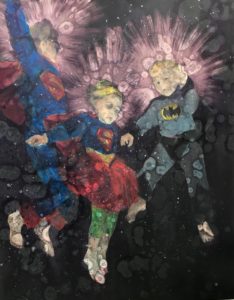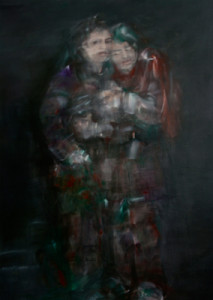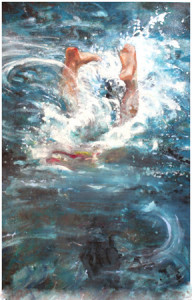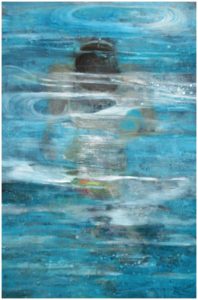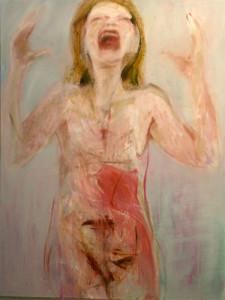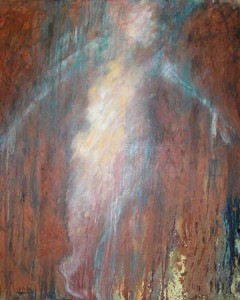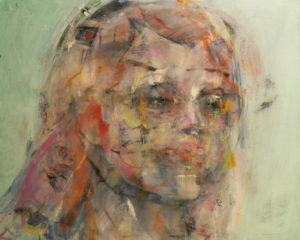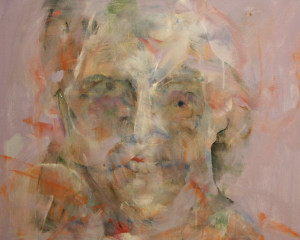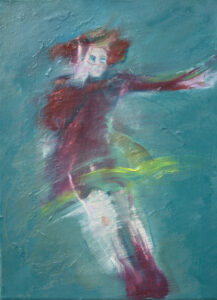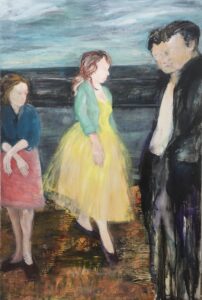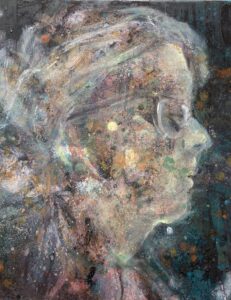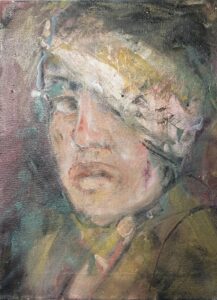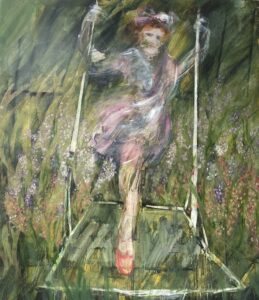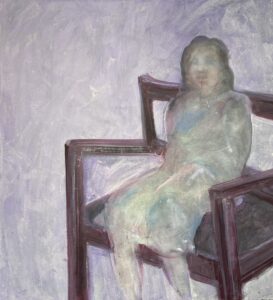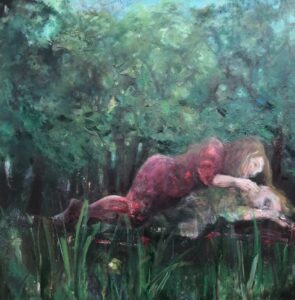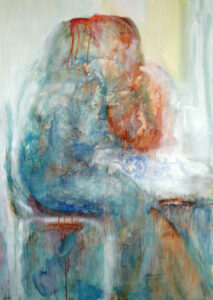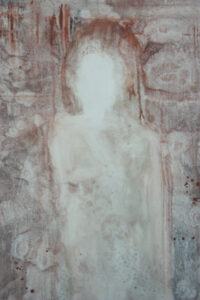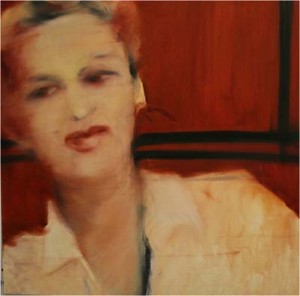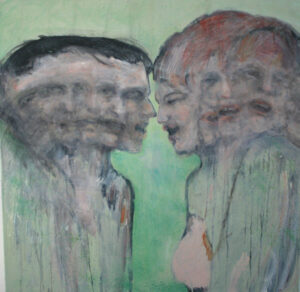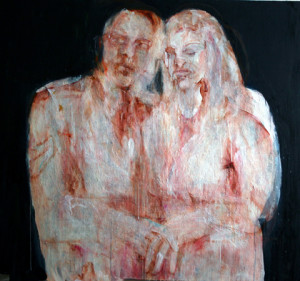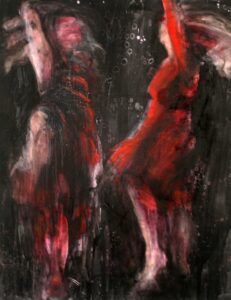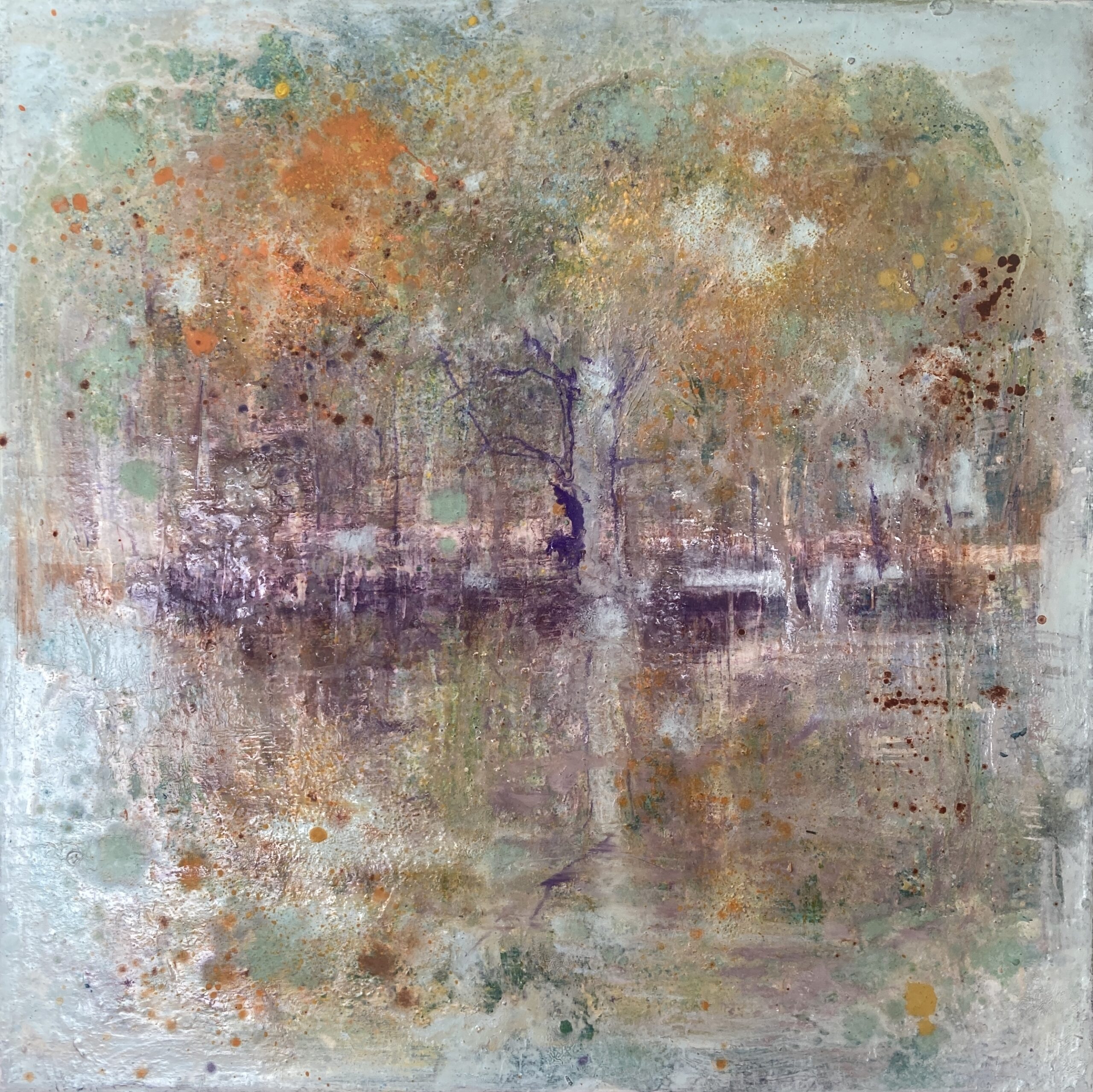The everyday and personal are sources of consideration in the representation of the body – birth, youth, growing old, dying, grief, love and family.
(Scroll down to continue.)
The painted image, with its material sensuality, tactility and atmospheric possibilities, corresponds more closely to the imprecision of the human brain’s mnemonic functions. Memory is often triggered by the banal: by otherwise vacant or impressionistic details which prompt the senses through association. Painted images – precisely because they lack the pictorial authority and truth-telling capacity of photography – can more easily trigger a free play of association, or become a catalyst for a web of connections that relate to the viewer’s own memory bank.
The intention is to evoke an experience of empathy and recognition: if you can really let yourself be open to that possibility, you complete the work by anticipating rather than judging or deciphering it. Memory and imagination try to recall the remnants of a history, recording continual change and loss. The paint bleeds and fades, the texture is rich and varied, distressed, scratched and multi-layered. A sense of incompleteness can seem both poignant and disturbing, and the paintings can seem paused as much as finished.
The history is revealed as the process treads the line between intention and control, allowing the unexpected to happen.

